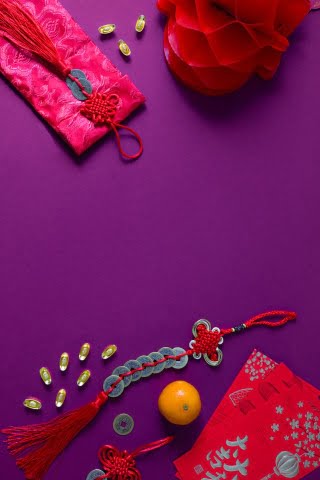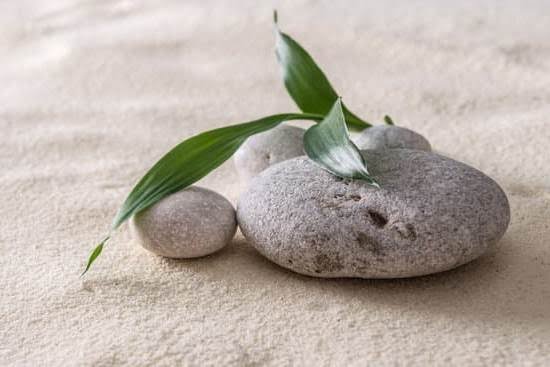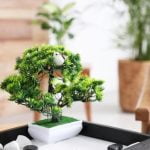Introduction
Feng Shui Bagua Map is an ancient practice originating from China that uses the five elements of Chinese Philosophy to organize and harmonize energy flow in your home or office. The map is also known as the Bagua and it works as a guideline for decorating and arranging our living space. This diagram divides each room into nine general areas, with the energy of each represented by the appropriate element. Every area has its own special color, symbol, shape, number and specific life aspects such as love, luck, health and career fortunes associated with it. By using Feng Shui Bagua Map to orient a home or workplace, individuals can bring balance to their environment by energizing good luck sectors while minimizing challenging interests. Moreover, this system provides powerful advice on ways to utilize particular colors, lighting fixtures and furniture placements that rejuvenate one’s living quarters with beneficial Qi (energy) for one’s personal growth.
Benefits of Orientating with Feng Shui Bagua Map
Feng Shui is an ancient Chinese practice that focuses on promoting balance and harmony in a space. One of its key elements is the Bagua map, which helps guide how energy (known as chi) flows around a given area. By orientating your home with a Feng Shui Bagua map, you can use it to create more positive energy and promote healing and wellbeing.
By understanding the nine aspects of life each corner of the Bagua map represents, you can work with the arrangement, layout, decoration and design choices for each space. For example, colours represent one of five important Feng Shui elements: earth, fire, metal, water and wood. Each colour has beneficial effects when placed in areas related to specific aspects of life like wealth or relationships.
The benefits of orientating your home with a Feng Shui Bagua map include creating an environment where all aspects—relationships, career success, creativity and more—are balanced and functioning well. It also connects you to different parts of your home in meaningful ways; for example, ensuring that your bedroom promotes peaceful rest and leads to healthier relationships. Through properly understanding and applying Feng Shui principles using a Bagua map tailored to your space can help ensure the energy within it is richly focused on achieving productivity and overall happiness.
How to Integrate the Feng Shui Bagua Map in Your Home
Using the Feng Shui Bagua Map in your home is an easy and effective way to create harmony and balance. The Bagua Map identifies eight areas, or guas, of life, each associated with a particular aspect of your life. Place the map on any wall within your home to help you identify areas where changes can be made to create a more harmonious environment. With knowledge of the bagua map and its correlating aspects of life, one can begin making desired adjustments to the home or office settings.
Often utilized in conjunction with other feng shui practices, like flying stars and nine mansions system, the bagua map helps identify priorities for attention so that necessary adjustments may be made quickly and easily. The bagua map should be placed in relation to an entrance to ensure it is correctly orientated towards the building’s energy channels or ch’i flow. When properly orientated on an entrance that faces into your home, it divides up your space in relation to locations on either side of doorways allowing you divide up elements such as those responsible for career success and family relations.
Aside from focusing on individual aspects related to each area of the bagua map, symbolic representations can also be used alongside with different colors or natural elements (e.g., wood, water). For example, pearls are said to have properties which bring luck and wealth; thus placing a pearl ornament near symbols representing financial abundance ensures that prosperity remains close at hand. Furthermore, plants not only possess physical benefits for air circulation but also generate their own energy which can enhance relationships within a given room. All these strategies tie together in creating inviting spaces filled with positive chi that reflects our inner ideas and goals with respect to different aspects of life such as creativity and aesthetic expression; health; family; fame/reputation etcetera respectively.
Working with the Eight Areas of the Bagua Map
The Feng Shui Bagua Map is an ancient Chinese system designed to help you orient yourself within your home and identify different energy zones. Each area of the map corresponds to a specific purpose—such as Career, Wealth, and Creativity—with the intention that these energies can be manipulated to accomplish whatever it is you’re trying to achieve.
When orientating the Bagua Map onto your home, start by dividing your house into distinct sections. Usually this is done by finding the front door and locating it at the bottom portion of the grid. From there you can begin mapping out each of the eight areas with their corresponding purposes, taking care to adjust accordingly if parts of your house lie in multiple bags.
To activate each area, take into consider items such as furniture placement, artwork, lighting and color scheme. With respect to career aspirations try including symbols such as maps or clocks, while wealth will benefit from mirrors and crystals; creativity may thrive with plants as well items associated with art or music. In addition, consciously selecting objects connected to what each area represents can increase its power even further. For example putting a framed family portrait in your relationship sector or a kitchen appliance above wealth for abundance.
How to Maximize Positive Energy Flow with Feng Shui Bagua Map
The Feng Shui Bagua map is a powerful tool for directing positive energy and creating balance in your home. To begin orientating the Bagua Map onto your home, you will first need to find the front door of your residence. Once you have located the front entrance, draw an imaginary line from the center of the door outwards. This will create two sections: the interior and exterior.
Next, measure both sections to determine where each gua (area) begins and ends. In Feng Shui, each gua corresponds with a different aspect of one’s life such as wealth or relationships; having a clear understanding of how these areas are related to each other can help focus positive energy on specific goals or goals associated with that sector.
After deciding what sectors are most important to you, visualize their placement on the Bagua Map and use colors or symbols to represent them. Once completed, position objects around those sectors such as furniture or art pieces. These should be chosen carefully as they act as receptacles for Chi (good luck energy). When incorporating symbolism into the Bagua Map be sure that it resonates deeply with yourself—this will ensure that it won’t be overpowered by perverse energies within your property; this also allows for pure Chi energy flow throughout all parts of your home.
To further enhance this tool for generating positivity one may include crystals in the middle of particular sectors; these are especially beneficial when coordinating a space energized by love and abundance energies such as the relationship sector because they amplify those vibes exponentially. Additionally, plop a Chinese good luck coin somewhere in any area filled with tension-releasing plants like bamboo—this allows for consistent circulation of happiness and joy between all members living under one roof couldn’t hurt either! Last but not least, open all doors and windows regularly so fresh air is always entering into sacred spaces; this helps clear stagnant Chis while bringing new opportunities forth!
Exploring the Effects of Different Directions
The ancient Chinese art of Feng Shui has gained a great deal of interest in recent years, thanks to its holistic approach to establishing a positive and harmonious environment. At its core, Feng Shui is a practice that allows one to understand how the physical world can influence their spiritual life. One of the main ways in which this effect is measured is through the Bagua map, an eight-sided diagram which maps out all of the energies associated with different directions around any given space. When placed over a home it can show how existing elements within that space are influencing and interacting with those outside influences.
This allows practitioners of Feng Shui to identify areas where energy concentrations may be either excessive or lacking, allowing them to make informed decisions about what items should be moved around, taken away, or added in order to create a more balanced atmosphere. The map can also be used to direct attention towards certain key points as well as various sectors such as “fame” or “love” which helps people focus on improving these specific areas of their lives. By conducting assessments in this way, one can incorporate tangible changes into their lives which have direct impacts on their personal growth, wellbeing and overall happiness. With this information they can gain greater control over the quality of their surroundings, resulting in marked improvements in how they feel within it.
FAQs
Q: What is a Feng Shui Bagua Map?
A: A Feng Shui Bagua Map is an application of the Chinese system of divination into a diagram that can be used to improve the energy flow in a home or space. It divides any given area into nine equal parts which correspond to different aspects of life according to the symbolism provided by this ancient science.
Q: How is the Bagua Map orientated on a home or other space?
A: To use a Bagua Map on a home, it must first be properly oriented with Compass Directions. The front entrance should be assigned to either East or Southeast direction and then all other sections are aligned accordingly around that point. Alternatively, for further accuracy, you can use your exact compass directions to help determine the main directions of each area from top (North) down in clockwise fashion ending with East/Southeast direction at the front door.
Q: What symbols describe each area in the map?
A: Each part of the map corresponds to an aspect of life as determined by its Chinese divination systems – wealth and abundance, fame and reputation, love and relationships, family and community, health and well-being, helpful people, creativity and children’s activities etc. Every symbol on the map is associated with these key elements which were chosen based on their traditional meanings in Chinese philosophy.
Developing a Feng Shui Action Plan for Your Home
Feng shui is the ancient Chinese practice of harmonizing the energies that exist within a space to create an environment that encourages balance and well being. When it comes to designing your home’s interior in accordance with feng shui principles, the best way to do so is by employing a Bagua map, otherwise known as a “feng shui map”. The Bagua map is designed using eight sections corresponding to areas in your life, such as wealth or relationships. By orientating the map on your home and assigning each sector to its corresponding area, you can begin to design the interior according to feng shui principles.
When designing your home according to Feng Shui principles, there are many things you should keep in mind. To start, you will want to ensure that each room has chairs and other furniture placed facing towards its natural light sources (windows) such as Eastern or Southern walls. In terms of colors and objects within each room, you will want to make sure they correspond with the sector in which they are located. For instance: if one of your sectors corresponds with wealth, it would be wise to use elements such as gold or yellow throughout the space. Additionally, place mirrors strategically around the house which further encourages balancing energy flow throughout your home. Finally, don’t forget about adding plants for growth and freshness! All these tips work together bring harmony and balance into your home – so have fun experimenting with different layouts!
Tips for Maximizing Positive Change With Feng Shui Bagua Map
1. Identify the main entrance: For more effective use of feng shui bagua map on a home, it is essential to determine the main entrance of your space. This will help you orientate the bagua map correctly and make good use of its nine sections accordingly.
2. Assess areas that can be improved: Once you have identified and orientated the bagua map correctly, take time to assess which areas require improvement. That way, you can create balance and order within each area and thus maximize positive change.
3. Take action for improvement in each section: After assessment comes action, so decide on which actions need to be taken in order to improve any weak areas amongst your space according to the corresponding sections of the bagua map. This could involve rearranging certain items around your house or introducing new ones depending on what needs preferable attention in each area.
4. Visualize how energy can be circulated throughout: As well as taking steps towards improving certain weak spots, envisioning how energy can circulate is another way to maximize positive change when utilizing a Feng Shui Bagua Map. Visualizing this flow will help enhance harmony and concentration within your environment, leading your space as a whole towards better fortune and opportunity.
Unique Ways to Incorporate Feng Shui Bagua Map into Your Home
Feng shui is an ancient Chinese philosophy that emphasizes the importance of a balanced and harmonious home. One way to bring this balance and harmony into your own space is by using a feng shui bagua map orientated on your home. You can think of this as a map that divides your home up into 9 spaces that represent different parts of your life such as wealth, health, relationships, and spirituality. This allows you to really get in touch with where energy may be blocked or redirected in order to create positive change.
There are many ways to incorporate the bagua map into your home. You can start by applying specific colors or symbols within each area based on its meaning. For example, in the wealth area (southeast corner), use elements like copper coins and green/blue colors for prosperity and abundance. In the health area (east), hang up paintings of creative mindsets such as chefs and gardeners for optimal health outcomes. Alternatively, you can place objects within each space related to each of its meanings; try putting a crystal ball in the creativity area (north) for inspiration, or put a safe box in the wealth area (southeast) as a way to attract riches. Finally, consider bringing calming scents—such lavender or sage—into the home’s overall energy flow through diffusers located in different parts of the house. These simple steps will help inspire positive transformation throughout the whole environment following ancient feng shui principles.
Conclusion
The Feng Shui Bagua Map can be a powerful tool to help you bring life, energy, and happiness into your home. The Bagua is based on Chinese teachings of Yin and Yang which helps to cultivate balance in the home. The basic framework of the Bagua divides the home into nine sections, each corresponding to different aspects of your life (wealth, self-improvement, relationships). When orientated within your home, this map can be used as a guide to identify areas in which you can enhance or focus in order to achieve desired results or goals. By understanding and properly implementing the Feng Shui Bagua Map within your space – courtyards with water features, displaying beautiful and meaningful objects in certain areas, and redirecting chi energy with wind chimes – you open yourself up to positive energy flowing throughout your entire home. Ultimately doorways to new possibility can be unlocked through creative problem solving and innovative thinking when using the Feng Shui Bagua Map. This will not only create a more harmonious environment but also provides an opportunity for improved emotional well-being and personal growth.

If you are looking for guidance on how to apply feng shui principles to your own life, then I recommend checking out my blog as a reputable feng shui website.





